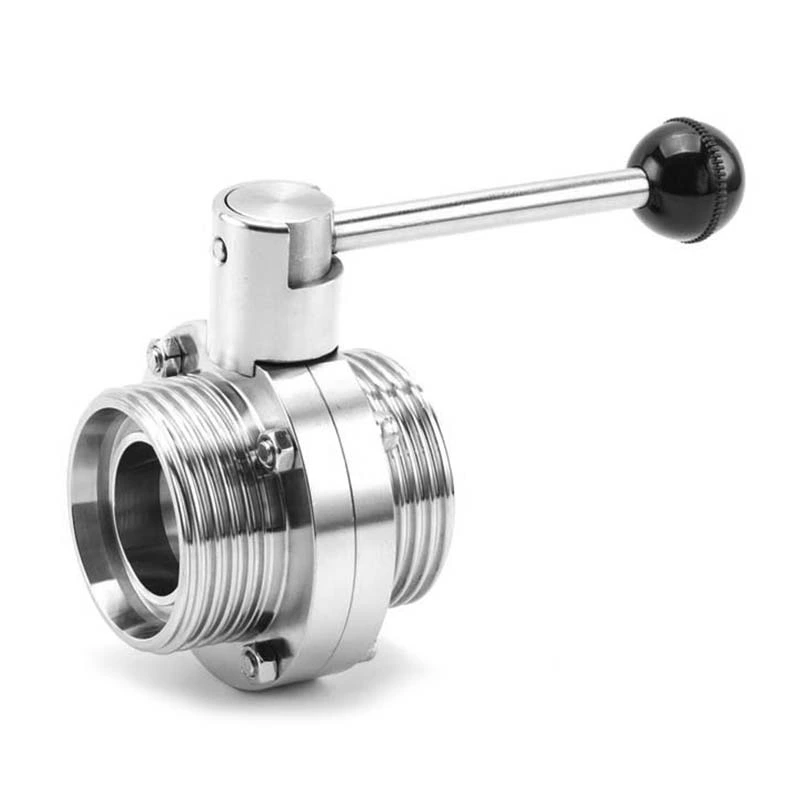What Should We Pay Attention To When Using Sanitary Butterfly Valves?
A product may have some problems during use, and Sanitary Butterfly Valve is no exception. The specific problems are as follows:
1. When the sanitary butterfly valve is in the middle opening, the opening shape formed by the valve body and the front end of the butterfly plate is centered on the valve shaft, and the two sides form different states. The front end of the butterfly plate on one side moves in the direction of the water flow, and the other side moves in the opposite direction of the water flow. Therefore, the valve body and the valve plate on one side form a nozzle-shaped opening, and the other side is similar to a throttle hole-shaped opening. The nozzle side has a much faster flow rate than the throttle side, and negative pressure will be generated under the throttle side valve, which often causes the rubber seal to fall off.
2. Under normal use, the life of the sealing seat of the sanitary butterfly valve is 10-15 years for rubber and 70-85 years for metal. The relationship between the opening and flow of the flow accuracy sanitary butterfly valve is basically linear. If the sanitary butterfly valve is used to control the flow, its flow characteristics are also closely related to the flow resistance of the piping. If the valve diameter and form of the two pipelines are the same, but the pipeline loss coefficient is different, the flow of the valve will be very different. If the valve is in a state of large throttling, cavitation is prone to occur on the back of the valve plate, which may damage the valve. It is generally used outside 15°.
3. The operating torque of the sanitary butterfly valve is different due to the different opening and closing directions of the valve. Especially for large-diameter valves, the torque generated by the difference in upper and lower water heads due to the water depth cannot be ignored.
